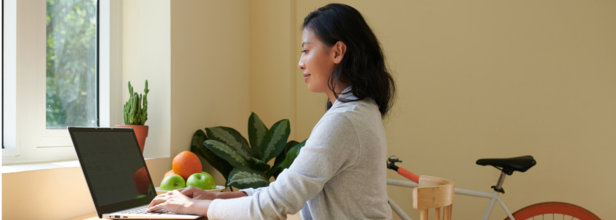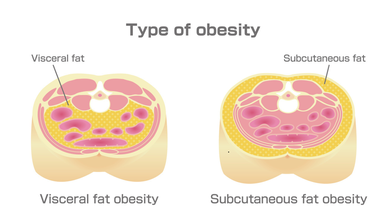- Health Conditions A-Z
- Health & Wellness
- Nutrition
- Fitness
- Health News
- Ayurveda
- Videos
- Medicine A-Z
- Parenting
Posture Correction: How To Align Your Body For Better Health And Confidence

How To Align Your Body For Better Health
Good posture is more than just standing tall; it’s a crucial aspect of overall health and well-being. Proper alignment of the body can prevent pain, improve physical performance, and boost confidence.
Good posture involves maintaining the natural curves of the spine: the cervical (neck), thoracic (mid-back), and lumbar (lower back) curves. When these curves are in their natural alignment, the muscles surrounding the spine are balanced and support the body effectively.
Benefits of Good Posture
Reduced Back Pain: Poor posture can lead to chronic back pain by putting undue stress on the spine and surrounding muscles. Correcting your posture helps distribute weight evenly, reducing strain on the back.
Fewer Headaches: Tension headaches often stem from poor posture, particularly from slouching, which increases muscle tension in the neck.
Improved Breathing: Proper posture allows the diaphragm to move more freely, enhancing lung capacity and improving breathing.
Enhanced Digestion: Sitting or standing correctly can aid in better digestion by preventing compression of the abdominal organs.
Increased Confidence: Standing tall with good posture can boost your self-esteem and make you appear more confident.
In Vedic traditions, posture is not only about physical alignment but also about spiritual and mental well-being.
According to Ayurveda, good posture facilitates the free flow of prana (life energy) throughout the body. When the spine is aligned, energy channels (nadis) are open, promoting overall vitality and health.
Mental Clarity: The Bhagavad Gita emphasizes the importance of sitting with a straight spine during meditation to achieve mental clarity and focus. This posture helps in maintaining a calm and centered mind.
Spiritual Connection: In yoga, maintaining good posture is essential for spiritual practices. Asanas such as parvatasana, padmasana, vrikshasana etc.are designed to prepare the body for meditation by ensuring that the spine is straight and the body is relaxed.
Here are some tips for maintaining a good posture
- Stand with your feet shoulder-width apart, knees slightly bent, and weight evenly distributed. Keep your shoulders back and relaxed, and your head level, with your ears aligned over your shoulders.
- Sit with your back straight and shoulders back. Your buttocks should touch the back of your chair. Keep your feet flat on the floor and avoid crossing your legs.
- Use a mattress that supports the natural curve of your spine. Avoid sleeping on your stomach, as it can cause neck strain. Instead, sleep on your back or side with a pillow between your knees.
A few exercises to improve your posture are
Bridges: Lie on your back with knees bent and feet flat on the floor. Lift your hips by engaging your core and gluteal muscles. Hold for a few seconds, then lower back down.
Planks: Get into a push-up position but rest on your forearms. Keep your body in a straight line from head to heels. Hold this position to strengthen your core, shoulders, and back
Chin Tucks: Sit or stand with your back straight. Pull your chin back towards your neck, creating a double chin. Hold for a few seconds and release. This exercise strengthens the neck muscles and improves alignment.
Move Frequently: Avoid staying in one position for too long. Take breaks every 20-30 minutes to stretch and move around.
Adjust Your Workspace: Ensure your desk and chair are at the correct height. Your computer screen should be at eye level to prevent neck strain.
Mind Your Posture: Regularly check your posture throughout the day. Use reminders or apps to help you maintain good posture habits.
By incorporating these tips and exercises into your daily routine, you can improve your posture, reduce pain, and enhance your overall health and confidence.
Remember, good posture is a lifelong commitment, but the benefits are well worth the effort.
So sit and stand tall, live long !!
Orthopedic Surgeon Reveals Why Your Joints Hurt More During Winters

Credit: Canva
Been wondering why your shoulders, knees or elbows hurt more than usual? Experts say it's due to falling temperatures.
Dr Christopher Murawski, an orthopedic surgeon with Duke Health, has revealed that changes in weather can add pressure to the joints and worsen existing pain.
"Whether it's warm weather, whether it's cold weather, whether it's changes in humidity, changes in pressure and things like that, they do experience joint pains, and muscle pains," he told ABC11.
Typically, joints hurt in the cold because low temperatures thicken the lubricating synovial fluid, a viscous, egg-white-like liquid in movable joints (like knees, hips, shoulders) that lubricates cartilage, reduces friction and provides nutrients, in the body. This makes joints stiffer, causing muscles to tighten.
Moreover, to conserve heat during extreme cold, the body also restricts blood flow which causes muscles and tendons around joints to tighten and pull, increasing discomfort. Less blood flow to extremities also means less warmth and oxygen around the joints, contributing to stiffness and aches.
According to Dr Murawski, the air surrounding us exerts about 15 pounds of pressure per square inch on the body. Any changes in barometric pressure can also increase pressure on the joints and amplify pain
"I'd say, while the science isn't perfect, physiologically, it makes some sense. We get some changes in pressure. The muscles can expand. Ligaments can expand -- things like that. And more importantly, it jives with the experiences that patients share with us even anecdotally and the symptoms they experience," he said.
Who Does It Affect The Most?
People with existing conditions like arthritis (osteoarthritis, rheumatoid arthritis) or past joint injuries feel these effects more acutely.
Those whom have suffered from past injuries, such as ligament strains or cartilage tears, do not exercise frequently and have weak quadriceps and hamstrings may also
become more noticeable to join pain in cold temperatures.
Working from home, sitting with legs crossed or lounging for long periods can also strain the joints as well as drinking less water as dehydration affects cartilage and synovial fluid and increases joint stiffness.
What Can You Do For Relief?
According to Dr Murawski, staying warm, active/mobile and hydrated, even if it is cold outside, is essential to keep the pain manageable. You should visit a doctor if the pain lasts for over three days and occurs several times within a month.
Experts also recommend maintaining weight, focusing on the glutes and hamstrings during exercise and avoiding sitting near cold windows or walking barefoot on cold floors to protect the bones.
Tilak Varma Undergoes Emergency Surgery For Testicular Torsion

Credits: iStock/ Instagram
India's left handed batter, Tilak Varma, 23, has undergone a testicular torsion surgery, after being diagnosed with it. This news has come as a set back to fans. Varma has created a name in cricket through his performance in the Indian Premier League or the IPL.
What Is Testicular Torsion?
It is twisting of spermatic cord, which supports the testes in scrotum. When this occurs the blood supply is cut off to the testicles and nearby tissue in the scrotum. If not treated in time, this could lead to a permanent damage to the testicle.
What Can Cause Testicular Torsion?
Some men could be prone to this due to defects in the connective tissue within the scrotum. This could happen due to an injury to the scrotum, that could lead to lot of swelling or following heavy exercise. While in some cases, there is no clear cause.
The condition is usually common during the first year of life and in the beginning of adolescence or puberty, but it could happen to older men too.
Is Testicular Torsion Common?
Urology Care Foundation notes that this is not a common problem and happens in about 1 in 4,000 males under the age of 25. However, while this condition is not prone to anyone in particular athletes in sports with potential groin or scrotal trauma like cricket, where getting hit by a ball could be common, increases the risk of the condition.
Tilak Varma Update
After his surgery, Tilak Varma has shared an update on his Instagram story: ""Thank you for all the overwhelming love! Already on the road to recovery and I'll be back on the field sooner than you know it."
His diagnosis came after he experienced an acute abdominal pain after breakfast on Wednesday morning in Rajkot, a day before Hyderabad were to play their final Vijay Hazare Trophy league-stage game against Jammu and Kashmir. Varma was then taken to hospital where scans showed that he required an emergency operation. In consultation with the medical team at the BCCI Centre of Excellence in Bengaluru, Varma was finally operated.
"It was a very emergency situation for Tilak to be operated upon, considering the immense pain he was in. Thankfully, the surgery went well on Wednesday evening at a super-speciality hospital in Rajkot. If all goes well, he could well be discharged tomorrow. It will be known in next 1-2 days about his status of playing next month's T20 World Cup," sources told IANS.
A BCCI also released a statement on Thursday that stated that Tilak has been ruled out of the first three New Zealand T20Is. "His availability for the remaining two matches will be assessed based on his progress during the return-to-training and skill phases," the Board said further.
Varma has been a mainstay in India’s T20I line-up, scoring 1,183 runs from 37 innings at an impressive average of 49.29 and a strike rate of 144.09. The left-hander has registered two centuries and six fifties in the format. His absence may push captain Suryakumar Yadav to bat at number three.
This Health Parameter May Be More Important Than BMI or Body Fat, According To Doctor

Credits: iStock
We have been told for long that BMI or the body mass index is the ultimate measurement for your healthy life. However, while it could predict how healthy you will be in the coming years down the line, it is not the only parameter that you should be focused on. In fact, several studies have shown that BMI in fact is not the right parameter, as it does not take in account for one's body type. Tracking the right parameter could actually help flag potential problems long before symptoms even appear. This can give you enough opportunity to intervene through lifestyle changes.
A Bengaluru-based dermatologist, Dr Priyanka Reddy, who is also a cosmetologist and trichologist, and the founder of DNA Skin Clinic and Wellness Centre, highlighted that one crucial health parameter is actually visceral or centripetal fat.
What Is Visceral Fat?
"This is the centripetal or visceral fat - the fat around the abdomen and internal organs. It starts in your late 20s to early 30s and it can predict your future health problems like these and it is closely linked to insulin resistance, poor sleep cycle, stress and other factors like these. This is also called apple-shaped obesity,” she explains.
How To Track Visceral Fat?
Tracking visceral fat does not always require expensive tests. Experts say there are both simple at-home ways and more precise clinical methods to understand whether your levels are in a risky range.
The easiest place to start is waist circumference. For women, a waist size above 80 cm signals higher health risk, while for men the risk increases beyond 90 cm. This measurement is quick, affordable, and surprisingly informative when done correctly and consistently.
Another helpful marker is the waist-to-height ratio. If your waist measurement is more than half your height, meaning a ratio of 0.5 or higher, it is considered unhealthy and linked to higher metabolic risk.
For clinical accuracy, DEXA scans are considered the gold standard. Dual-Energy X-ray Absorptiometry provides a detailed breakdown of fat distribution, including visceral fat stored around organs.
Many people also rely on smart scales, which offer a visceral fat score. A score above 9 may indicate increased risk. However, experts caution that this number should be seen as a trend over time rather than a medical diagnosis.
In general, a healthy waist range is slightly lower than risk cut-offs. For women, a waist below 75 to 80 cm is considered healthy, though risk rises after 40. For men, a waist under 88 to 90 cm is ideal, with risk also increasing after 40.
Why Visceral Fat Increases
Visceral fat builds up due to a combination of lifestyle and hormonal factors. Poor sleep, chronic stress, insulin resistance, low muscle mass, frequent alcohol intake, and diets high in ultra-processed carbohydrates all play a role. Hormonal shifts such as PCOS, menopause, or low testosterone can further worsen fat accumulation around the abdomen.
How to reduce visceral fat
Experts recommend strength training three to four times a week as a non-negotiable habit. This should be combined with Zone 2 cardio and one or two HIIT sessions weekly. Meals should prioritize protein and fibre, while sugary drinks and late-night eating should be minimized. Consistent sleep of seven to eight hours and active stress management through yoga, dance, or breathwork are equally important. Alcohol should be paused if levels are high.
If visceral fat does not reduce despite consistency, it may be time to check for thyroid issues, insulin resistance, high cortisol, or hormonal imbalances.
Long-term maintenance
To keep visceral fat in check, track your waist monthly, lift weights year-round, prioritize sleep, and manage stress before cutting calories. Experts emphasize that visceral fat is a metabolic issue, not just a weight-loss problem. Address the root causes, and fat loss often follows naturally.
© 2024 Bennett, Coleman & Company Limited

